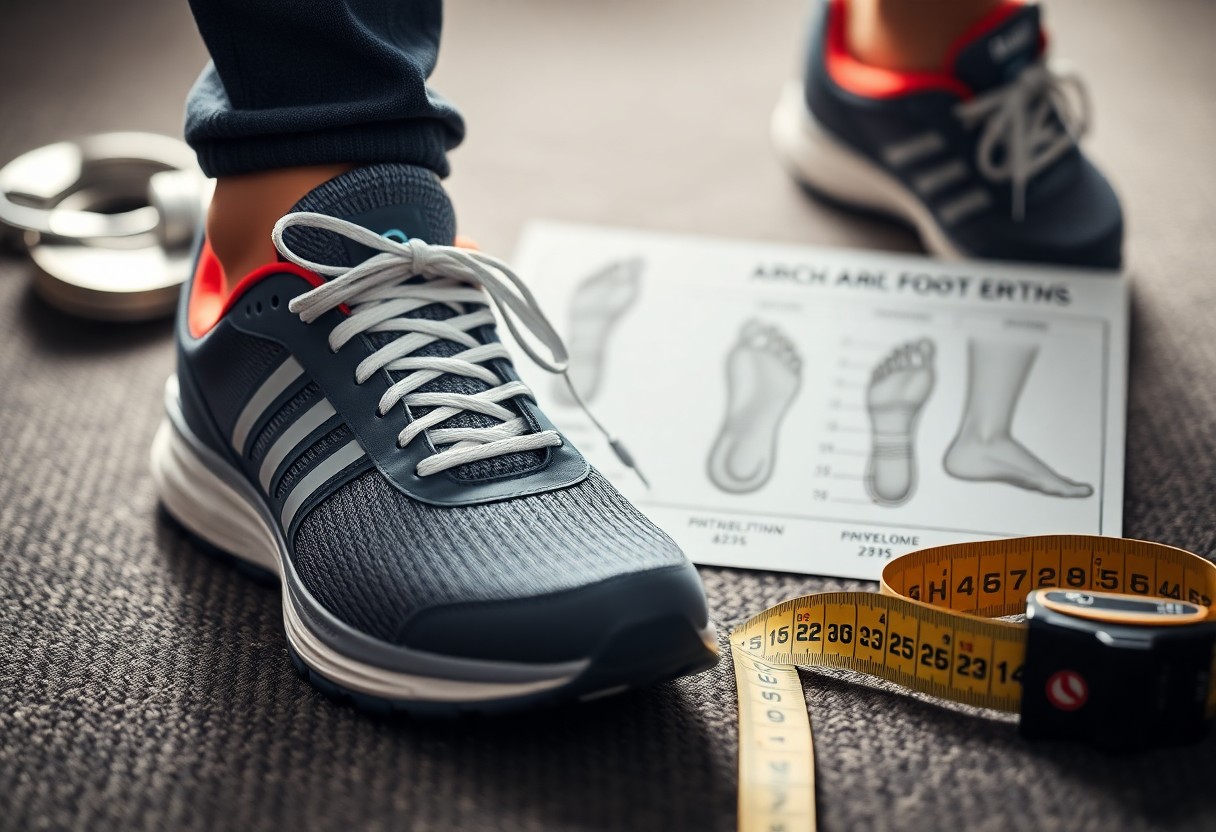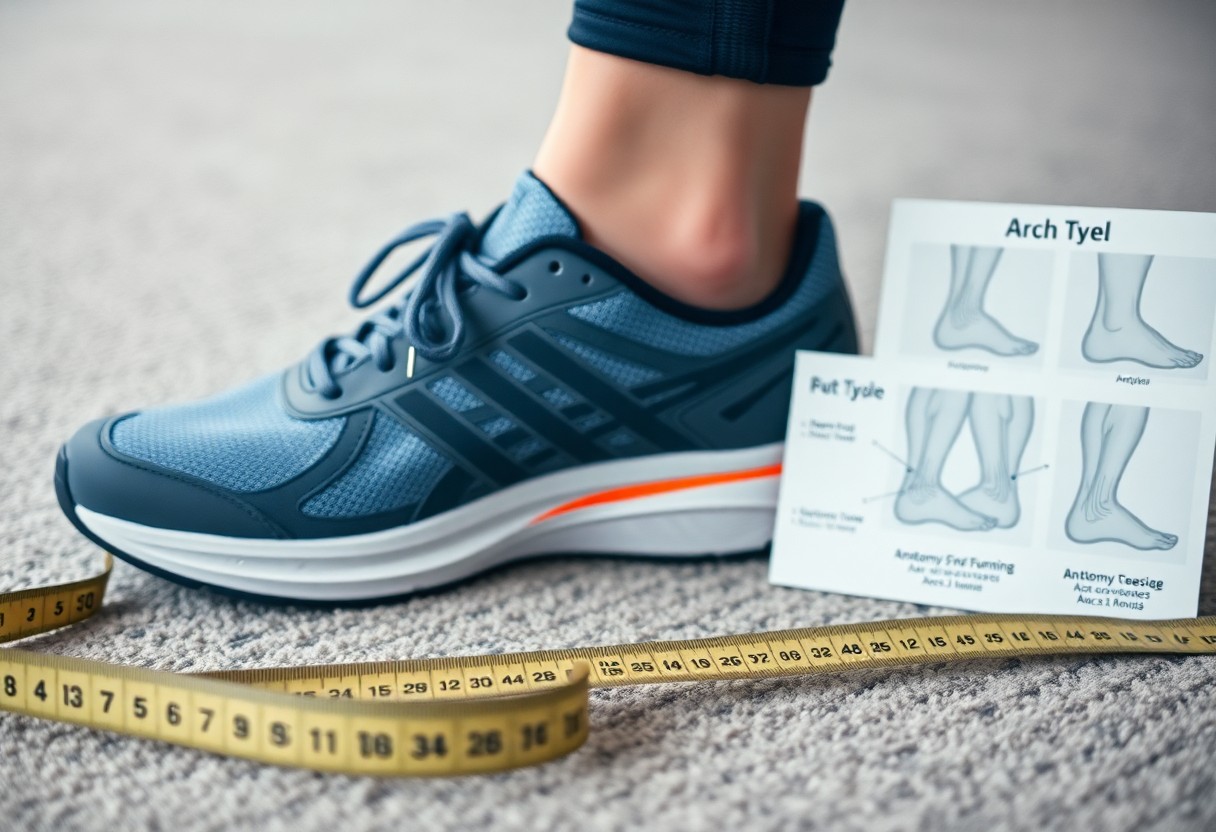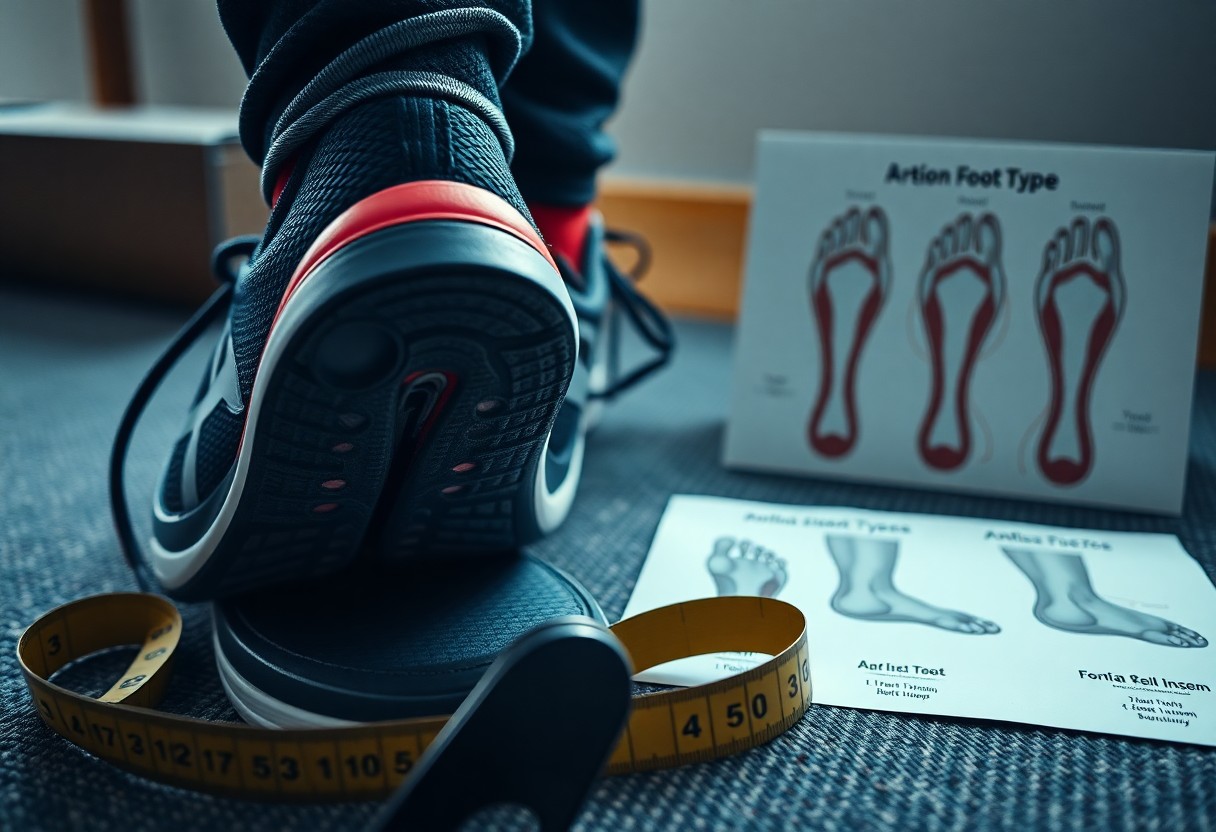Providing optimal support for your feet doesn’t always mean adding arch support to your shoes. Surprisingly, most people do not need arch support in their footwear. Research shows that avoiding artificial arch support can actually strengthen your foot muscles. Over time, depending on man-made supports can lead to muscle weakness. The human foot has evolved with natural arches designed to flex and adapt to various surfaces, and restricting this natural movement with rigid supports may harm your foot health in the long run. This detailed article seeks to clarify the science behind arch support, empowering you to make knowledgeable decisions about your foot health.

Explore the Evolution of Arch Support in Footwear Design
The natural support system of your feet has played a crucial role in the history of footwear design for centuries. The idea of incorporating arch support gained momentum in the 1920s with Dr. William Scholl’s introduction of commercial orthotics. Before this innovation, people relied on the inherent strength and flexibility of their feet. This historical perspective not only sheds light on how our understanding of foot health has progressed but also highlights the necessity to rethink current footwear practices in light of this evolution.
Transitioning from Traditional Footwear to Modern Standards
The history of footwear illustrates that ancient cultures primarily wore simple, flat sandals or often went barefoot. Such practices supported natural foot development and strength. The feet of our ancestors remained robust and adaptive without the need for artificial supports, as indicated by studies on indigenous populations who continue to embrace traditional footwear choices. This historical context emphasizes the critical importance of natural foot mechanics in maintaining foot health, showcasing how modern footwear trends may overlook these fundamental principles.
Evaluating Modern Shoe Design and Its Effects on Foot Wellness
By the mid-20th century, particularly in the 1950s, shoe manufacturers began to standardize built-in arch support as a common feature in footwear. Currently, the majority of modern shoes come equipped with structured arch support, a trend that has become commonplace despite the scant scientific evidence supporting its universal necessity. This shift reflects changing consumer expectations and industry standards, but it also prompts an important examination of how these designs affect foot health. With approximately 70% of modern footwear now featuring arch support, it becomes essential to assess whether this reliance is advantageous or harmful.
Research published in the Journal of Foot and Ankle Research indicates that an over-reliance on arch support may lead to muscle weakness in the feet. As a result, many podiatrists are now recommending incorporating periods of barefoot walking and utilizing minimally supportive footwear to help maintain natural foot strength and promote comprehensive foot health.

Diving Deep into the Anatomy and Function of the Human Foot
Your feet are remarkable structures, comprising 26 bones, 33 joints, and over 100 muscles, and they function best when allowed to move freely. The arch of the foot is a self-supporting structure that gains strength through regular activity and loses resilience when subjected to artificial supports. Studies reveal that 75% of individuals wearing conventional shoes with arch support exhibit decreased foot muscle activity, which can result in diminished natural strength over time, underscoring the necessity of allowing your feet to engage in their natural movement patterns.
Unlocking the Advantages of Natural Foot Mechanisms
The natural design of your foot is a true engineering marvel, featuring a complex system of self-support. Walking barefoot or in minimal shoes enables the feet to experience a full range of motion, allowing the arches to flex and strengthen organically. Research suggests that individuals who frequently walk barefoot or choose minimal shoes develop stronger foot muscles and more stable arches compared to those who rely on supportive footwear. This highlights the significance of natural movement in promoting foot health, as it encourages the body to maintain its structural integrity without external aids.
Methods for Strengthening Foot Muscle Function and Development
Disrupting your foot’s natural movement can inhibit its development. Your foot muscles require consistent engagement through natural activities to sustain their strength. Research published in Nature indicates that wearing shoes without arch support contributes to developing more robust intrinsic foot muscles. This connection illustrates the crucial role of natural movement in maintaining optimal foot health, particularly for those experiencing discomfort or weakness in their feet.
Additionally, it is vital to understand the implications of wearing shoes with built-in arch support. Prolonged use of such footwear may lead to reduced engagement of foot muscles, resulting in potential weakness over time. Studies have demonstrated that transitioning to minimal footwear can boost foot muscle strength by up to 60% within eight weeks. However, it is essential to approach this transition cautiously, especially for individuals with pre-existing foot conditions, to prevent injury and facilitate a healthy adaptation process.
Investigating Scientific Insights and Evidence Regarding Foot Health
If you are keen to understand the scientific principles behind arch support, numerous studies demonstrate that your feet can become stronger without artificial support. Various investigations highlight that natural foot movement encourages better muscle development and enhances arch stability, emphasizing the critical role of biomechanics in maintaining foot health and the potential risks associated with over-reliance on artificial support systems.
Noteworthy Scientific Studies on the Effects of Arch Support
Among the most significant research findings, a study published in Nature shows that individuals who wear minimal footwear possess foot muscles that are 50% stronger than those who wear traditional supportive shoes. This evidence reinforces the idea that regular movement and exercise enable your feet to maintain their arches naturally, emphasizing the importance of selecting the right footwear for optimal foot health.
Comparative Evaluation of Footwear Choices Across Varying Populations
Contrasting Traditional vs. Minimal Footwear Users
| Traditional Shoe Users | Minimal Shoe Users |
| Exhibit higher rates of flat feet | Demonstrate superior arch strength |
| Show weaker foot muscles | Exhibit stronger foot muscles |
A thorough analysis of diverse populations reveals marked differences in foot health. The structure of your feet can adapt significantly depending on the types of shoes you choose to wear, underscoring the necessity for individuals to actively assess their footwear choices.
Insights from Global Population Studies
| Developed Countries | Barefoot Communities |
| 20% flat foot occurrence | 3% flat foot occurrence |
| Higher reliance on arch support | Natural arch strength |

Understanding the Paradox of Support in Footwear Choices
Challenging widely accepted beliefs, over-reliance on arch support in footwear can undermine your feet’s natural strength. The human foot is intricately constructed with a complex network of muscles, tendons, and ligaments that work together to deliver natural support. When artificial arch support assumes this role, your foot muscles may become less engaged, leading to gradual weakening and a reduced ability to perform daily activities efficiently.
Recognizing the Dependency Cycle Created by Arch Support
Consistent use of arch support can create a harmful cycle. Feet may become dependent on external support, resulting in muscle atrophy. Research indicates that 70% of individuals who regularly use arch support report increased discomfort when walking without their supportive shoes, highlighting the development of this dependency that can adversely affect overall mobility and comfort.
Connecting Muscle Weakness with Excessive Use of Arch Support
Wearing shoes equipped with built-in arch support could weaken your intrinsic foot muscles by as much as 50%, according to findings in Nature. This weakening compromises your feet’s natural arch support system, potentially leading to conditions such as flat feet and other foot-related issues. It is important to recognize that this muscle weakness can extend beyond your feet, as weakened foot muscles can negatively impact your overall posture and balance. Research indicates that individuals transitioning to minimal footwear often experience a 60% increase in foot muscle strength within six months, highlighting the advantages of avoiding unnecessary supports.
Exploring Natural Solutions for Improved Foot Health
For those aiming to step away from conventional arch support, several natural alternatives can enhance foot strength. These strategies focus on enabling your feet to function as they were biologically designed, promoting the development of stronger foot muscles and more stable arches through natural movements and practices aimed at boosting foot health.
Choosing Minimalist Footwear for Enhanced Natural Movement
Minimalist shoes, characterized by zero drop soles, wide toe boxes, and flexible materials, encourage natural foot movement. These designs allow your feet to move freely, supporting proper foot mechanics and helping maintain natural arch strength. Research indicates that regular use of minimal footwear can boost foot muscle strength by up to 60% through everyday activities, reinforcing the importance of selecting footwear that aligns with your lifestyle needs.
Safe Strategies for Transitioning to Minimal Footwear
When contemplating a switch to minimalist footwear, it is essential to take a careful and gradual approach to ensure safety and comfort. Start by wearing minimal shoes for short durations, gradually extending the time over several weeks. This strategy helps prevent overuse injuries as your feet adapt to their newfound freedom, ensuring a smoother transition that promotes long-term foot health.
An effective transition should ideally incorporate specific foot-strengthening exercises. Begin with 10-15 minutes per day in minimal shoes, increasing the duration by an additional 5-10 minutes each week. Include exercises such as toe spreads and brief barefoot walks on safe surfaces. This gradual approach helps minimize the risk of common transition injuries while effectively building your natural arch strength for better overall foot health.
Considering Individual Medical Factors for Optimal Foot Health
It’s crucial to recognize that your foot health requires tailored attention. While natural foot movement is beneficial for muscle strength, certain medical conditions may require specific support. Factors such as your foot structure, activity level, and any pre-existing conditions will determine your ideal footwear needs, underscoring the importance of personalized assessments.
Identifying Conditions That May Necessitate Arch Support
Contrary to popular belief, arch support is not universally required. However, individuals with acute injuries, severe flat feet, or specific medical conditions may find temporary or permanent arch support beneficial. Research suggests that only 10-20% of the population genuinely requires specialized arch support for medical purposes, emphasizing the importance of personalized evaluations to ensure optimal foot health.
Guidelines for Thorough Professional Foot Health Assessments
To make well-informed decisions about your footwear, it is wise to consult a foot health professional. Comprehensive assessments should include gait analysis, evaluation of foot structure, and medical history review. These components are vital for determining whether you need arch support or if transitioning to minimal footwear is a feasible option tailored to your unique circumstances.
Support from a qualified professional can provide clarity and guidance on your foot health journey. A thorough assessment should cover measuring arch flexibility, assessing muscle strength, and analyzing walking patterns. Your healthcare provider should also consider your daily activities and any past foot injuries to develop an effective treatment plan suited to your needs and lifestyle.
Analyzing Footwear Choices and Their Effect on Foot Health
Your choice of footwear significantly affects your foot health. You now understand that arch support is not essential for most individuals and may actually weaken foot muscles over time. Your feet have inherent strength and flexibility, functioning best when allowed to operate as nature intended. If you are contemplating a transition to minimal footwear, initiating this process gradually will help your feet adapt effectively. The evidence strongly suggests that allowing your feet to function without artificial support can result in stronger muscles and improved foot health for the majority. Always consider your personal needs and consult a foot health professional for specific concerns regarding your foot health.
Common Questions Regarding Arch Support and Foot Health
Do healthy feet truly need arch support in shoes?
Most healthy feet do not require arch support in shoes. Research indicates that natural foot strength develops more effectively without artificial support. The foot’s muscles and arches perform optimally when allowed to function naturally. This aligns with findings on populations that frequently go barefoot or prefer minimalist shoes, which show stronger foot muscles and fewer arch-related issues.
Can relying on arch support weaken feet over time?
Yes, prolonged dependence on arch support can lead to weakened foot muscles. When artificial support takes on the role of foot muscles, these muscles become less engaged and gradually lose strength. This creates a cycle of dependency. Research published in Nature shows that individuals who consistently wear conventional shoes with arch support often exhibit weaker foot muscles compared to those who opt for minimal footwear.
Who truly needs arch support in their footwear?
Some individuals with specific foot conditions, injuries, or medical issues may genuinely benefit from arch support. This includes those diagnosed with flat feet, specific foot injuries, or structural abnormalities. However, these cases should be evaluated by a foot health professional who can develop a suitable treatment plan. The goal should be to restore natural foot function whenever possible, rather than relying on permanent support.
The Article Arch Support: Essential Facts About Shoe Necessities Was Found On https://limitsofstrategy.com
The Article Arch Support: Key Insights on Essential Shoe Needs First Appeared ON
: https://ad4sc.com
Comments are closed